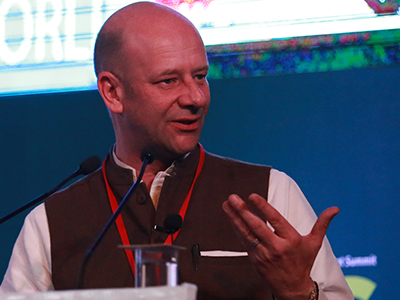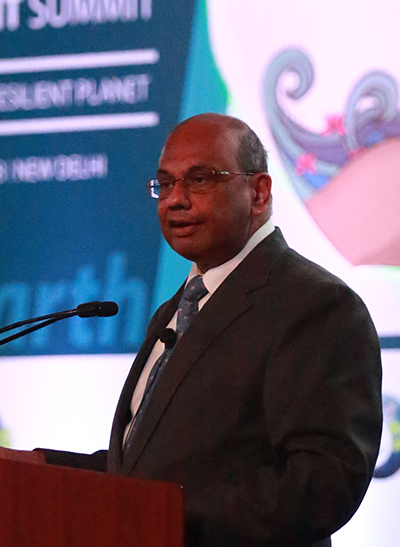
What makes India the world’s sustainability lab?
 India is the laboratory of the world
India is the laboratory of the world
Thevaledictory session reiterated a theme common to many WSDS 2018 sessions—the role of India in creating scalable solutions the world can adopt.
Identifying the way forward for the nation’s many hurdles in unleashing sustainability, Mr Yuri Afanasie, UN Representative in India and UNDP Resident Representative, said that at the heart of sustainable development is the “government approach”, one that combines cooperation between ministries and governments for every issue at hand.
“India is not only the biggest democracy—it is also a laboratory for the development solutions of tomorrow. The fact that this summit is being held in India for the last 18 years or so is testimony to the fact that India matters,” he said.
What are the factors that allow India to lead the sustainability agenda?
Cited first in Mr Afanasie’s special remarks at the summit’s close was India’s acceleration in every area of development. “It is an increasing liberal economy, where the traditional creativity of the people, innovation, and businesses can succeed and grow fast,” he said. Unique to India is not only incredible innovation, but also “low cost, fast deploying, easily scalable solutions” that can work for other countries. India has the market size to try out such solutions, and the international financial support to make it happen, he explained.
India’s lack of wealth may be a catalyst, instead of a hindrance
“We may not be a rich country, or have the financial means of California, but because of those restrictions, we can create, innovate, deploy, and solve one-by-one the problems in our trajectory.” India also succeeds because it has “no choice” but to succeed, he added. “Other countries have immense water, territory, and immense extractive potential for raw material. India is not graced by that quantum of resources for its growing population.” He drew a parallel to Japan, which was once ravaged by World War II, and today enjoys a high quality of innovation and technology.
 Sustainability: all or nothing
Sustainability: all or nothing
“The UN is watching India with a magnifying glass”
The United Nations is watching India with a magnifying glass, he added, because the nation represents almost 50% of the entire SDG agenda, and has the incredible potential to come up with solutions. The UN community is today taking inspiration from India’s policy frameworks, he informed the audience.
Echoing the all-or-nothing nature of India’s sustainability plans, Dr Ajay Mathur, Director-General, TERI, drew attention to the fact that vast amount of infrastructure that India will own in 2030 is yet to be built. “If it is built like it was built yesterday, we wouldn’t have a tomorrow,” he said. “Tomorrow can’t be more of yesterday—that’s at the heart of sustainability and what TERI does.”
TERI’s role, he explained, includes this spirit of collaboration that sustainable development needs.